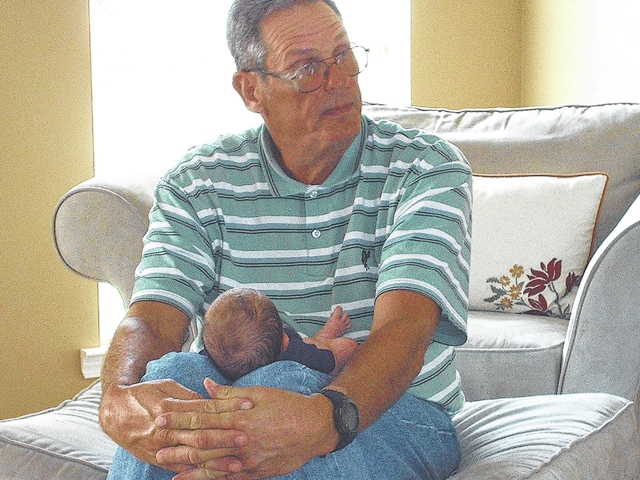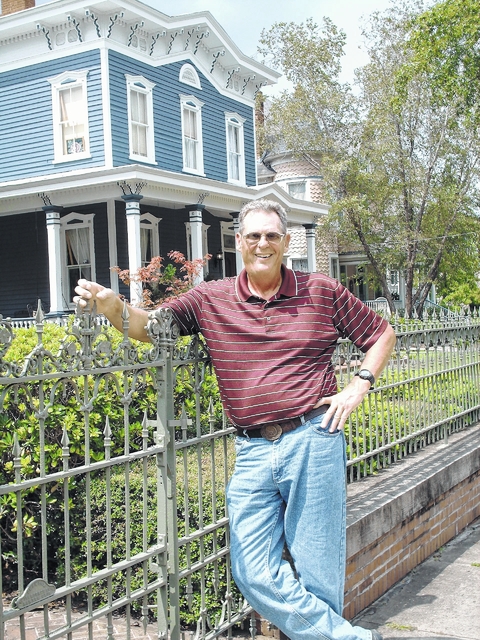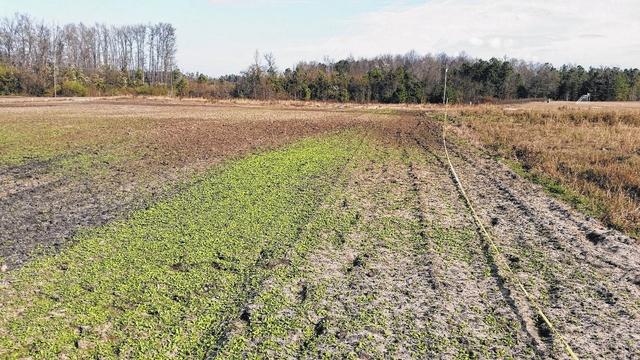Robert Simmons does not live in Sampson County, but the land still has a piece of his heart.
His relationship to the area goes back many years ago when his grandfather Fitzhugh Lee Simmons Sr. farmed in the area near Roseboro. Mintz Christian Academy now sits on some of that land. His great-grandfather Franklin Simmons donated land for the church.
“I have family ties in the church and the school, so it’s home,” Simmons said. “My experience in Sampson County and Mintz has always been powerful. I always enjoy being there. There’s a lot of memories.”
Sampson County played a major role with his current work in agriculture, inventions and making the environment a better place. In a lot of ways, he was blessed to have spent time there as a young man.
“It pretty much set the hook in me,” Simmons said. “It’s a great place and I’ve always wanted to help that area of the country.”
Simmons remembers visiting in the summer.
“I enjoyed being there and I got to know him very well,” Simmons said. “That kind of gave me my roots with farming.”
In his later years, his health began to diminish and certain parts of the farm were sold. When he returned, Simmons owned land passed onto him from his father, Fitzhugh Lee Simmons Jr. He donated about 20 acres to the academy and had more than 8 acres left over. Five acres were used to build a prototype for a methane generator.
Several years ago, Simmons filed a patent for biogas generator, designed to convert organic waste material within a sealed reservoir to a biogas. Simmons said the unique system with a tank is gaining interest from a California plant.
“The bugs that are inside are microscopic bugs that have names longer than your arm,” he said.
According to the patent, a solar thermal panel connected to the reservoir heats a fluid traveling through a conduit, which is connected to a heat exchange device within the reservoir. Next, the heated fluid travels through the heat device and warms the waste material to facilitate the anaerobic digestion process. Solar cells produce electricity to operate one or more pumps, which transfers the heated fluid through the conduit, and pumps the waste material and the generated biogas in and out of the reservoir. A rotating lid structure has long agitators which extended into the reservoir.
“You can speed the process and make it comfy for the bugs,” he said. “The bug loves, it propagates, has kids and they eat.”
Through his system, Simmons believes there will be a 60 percent reduction in the waste and a ton of gas.
“With dairy cows, you’re looking at a pound of waste, which equals a cubic foot of gas,” Simmons said.
Based on Simmons’ equation, he believes 1.7 million cows can produce 170 million cubic feet of gas per day. Also, Simmons believes he’s helping the environment in the process.
“It takes cares of two things,” he said. “It cleans up the environment and plus it’s an energy source. You can power up a generator, a gas turbine and use it as fuel for your car.”
Compressed natural gas, which is methane stored at a high pressure, may be used as an alternative to gasoline, diesel fuel and propane. With an abundance of hogs in the county, Simmons thought his system would work and could remove arsenic in the waste product and recycle it.
“You can give the farmer a good fertilizer and you can also extract the methane from it,” Simmons said.
The system is still in development stages.
Simmons recently returned to California because of a bill that established the nation’s toughest restrictions on destructive pollutant including black carbon, fluorinated gases and methane. Also known as SB 1383, the bill is designed to reduce the emission of super pollutants and promote renewable gas by requiring reductions in black carbon, methane and hydrofluorocarbon by 2030.
According to the bill signed on Sept. 19, 2016 by California Gov. Edmund G. Brown Jr., the sources of the pollutants include petroleum-based transportation fuels, agriculture, waste disposal and synthetic gases used in refrigeration, air conditioning and aerosol products. The bill requires the state board and the Department of Food and Agriculture to adopt regulations to reduce methane emissions from livestock manure management operations and dairy manure management operations.
“I’m excited about what lies ahead,” Simmons said. “I think my heart will always be in North Carolina and Sampson County.”
Simmons graduated from high school in Savannah, Ga., and held several jobs in the coastal city before heading out west.
“It was an opportunity to see the United States and some new things,” he said.
Simmons made his way out to California where he began working in the oil business and helping farmers transition to camelina, an oil-bearing seed which contains a low carbon footprint when used as an aviation fuel. Within the San Joaquin Valley in California, there’s a lot of promise for it.
“All the potential is there to grow it in that valley,” he said.
For agricultural purposes, it’s also used in swine, cow and broiler feeds. The plant is the size of a soybean and one pound may equal up to 500,000 seeds.
Simmons believes there’s a possibility to grow it in Sampson County, which could come with a benefit for the military too.
“The potential is still there for it and it’s an easy crop to grow,” Simmons said. “The military wants to burn aviation fuel used by camelina. At the same time, if it helps the environment, what’s wrong with that?”
It’s unfamiliar to many farmers in the Sampson County area, but earth science students from Dr. Winnie White’s class at Mintz Christian Academy know a lot about it through their work with Simmons and Scott Owen.
“I put forth an idea and the kids jumped at it,” Simmons said. “You can see the excitement in the kids eyes.”
The students planted a test plot of camelina, next to school. They’re hoping the 2 acres of land will bloom before the academic year ends.
Simmons’ work at Mintz is one of several ways he wants to stay busy.
“I’m retired and I don’t see myself at home watching ‘Days of our Lives,’” he said with a chuckle. “I still like to be active and there’s things that I come in contact with that I feel deeply about.”
For Simmons, it’s been a powerful journey. Along the way, he met a lot of people who educated him on several matters.
Simmons legally calls Texas home, but travels throughout the country. One moment he could be visiting his son Robby Simmons Jr., who attends the Southern Baptist Theological Seminary in Louisville, Ky. And the next trip could be to Savannah, where his daughter Kelly Marie Simmons works as an environmental engineer.
“I’m here, there and everywhere,” he said. “The one good thing about the motor home is that it allowed me to be boots on the ground where I need to be and for a length of time, if necessary.”
One of his enjoyable destinations is Sampson County.
“I was blessed to be in North Carolina and help start the project there and helping folks in the church,” he said. “It was powerful. I think we turned some green lights on for a new idea.”




